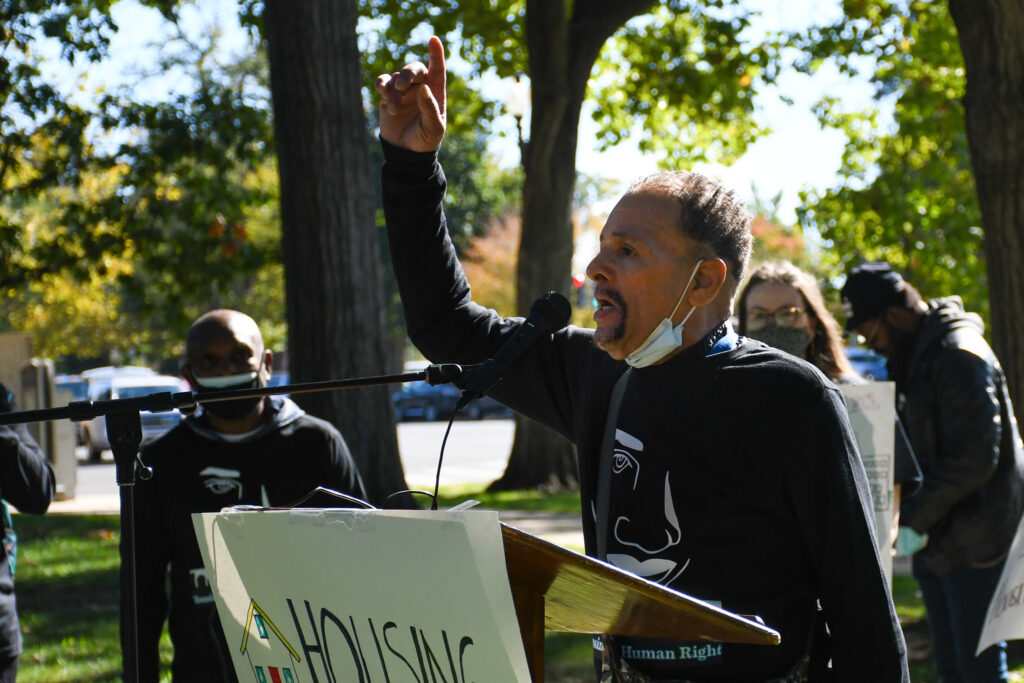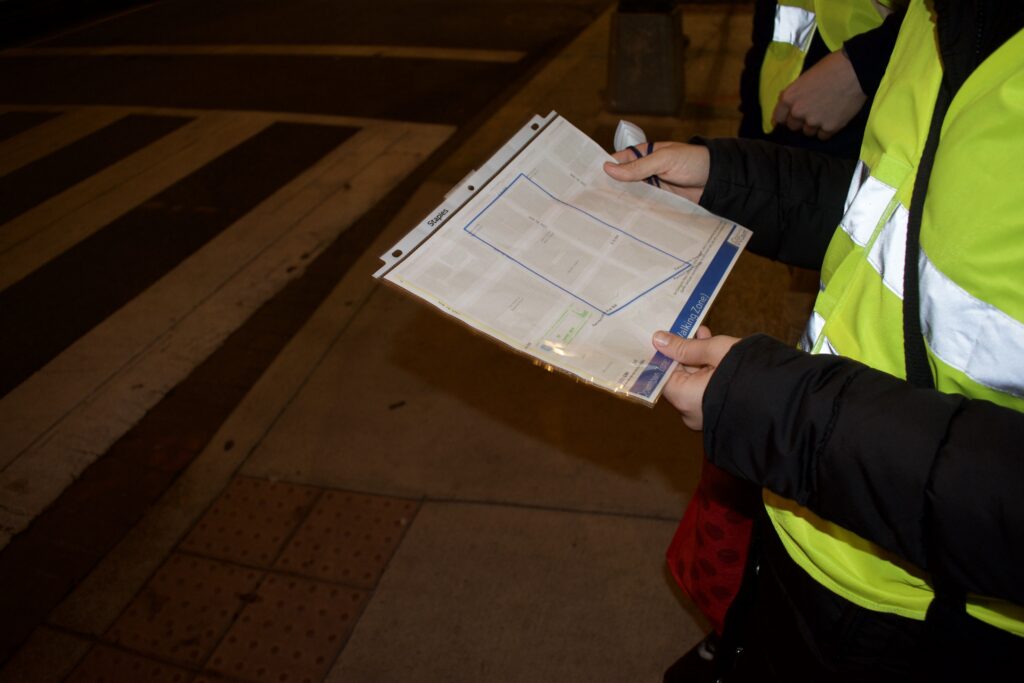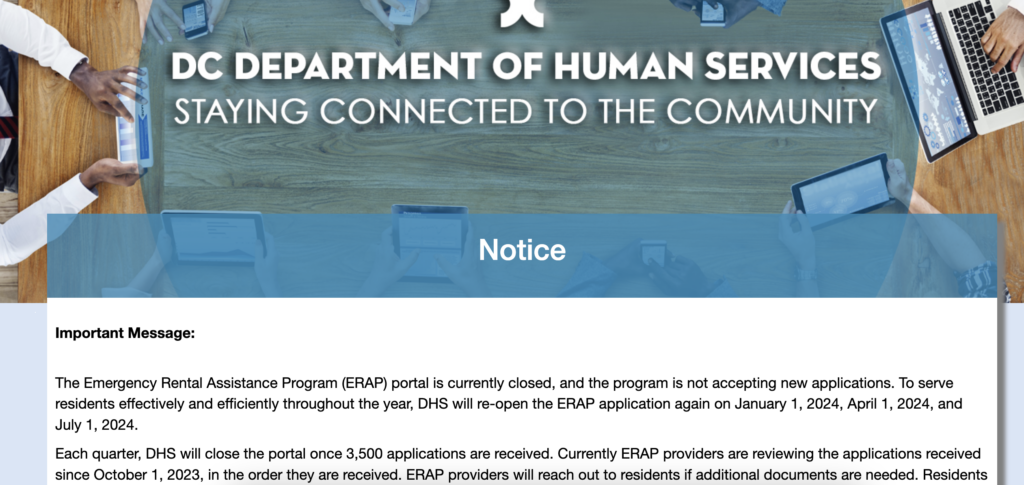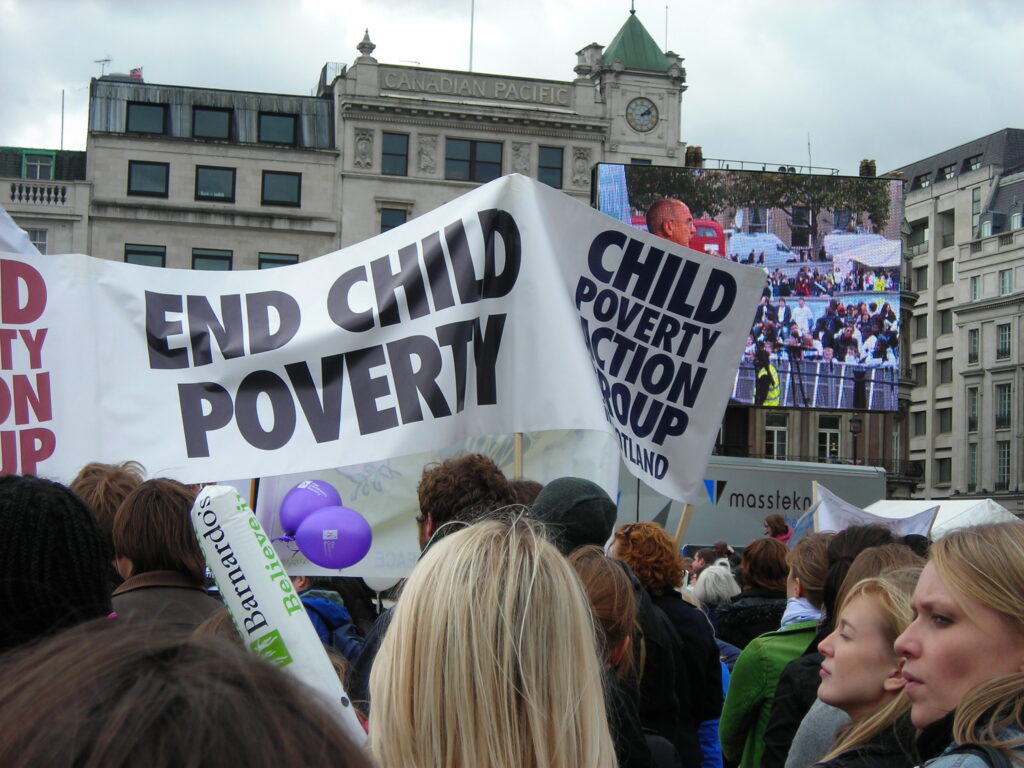D.C. residents had until 7 p.m. Wednesday, Oct. 27, to apply for the city’s COVID-19 rent and utility assistance program.
STAY D.C. — which stands for Stronger Together by Assisting You D.C. — launched on April 12 and had awarded about $155 million in rent and utility assistance to 23,000 people as of Oct. 14, according to a press release from Mayor Muriel Bowser. The money comes almost entirely from the federal government’s Emergency Rental Assistance (ERA) program, but those funds are running out.
The mayor announced the deadline on Oct. 14, providing just under two weeks for any final applicants to seek assistance. But activists and progressive groups such as Empower D.C. — backed by an advisory neighborhood commission and several D.C. Councilmembers — are fighting to keep the program open, describing an extension as essential to preventing a wave of eviction filings and keeping people who are behind on their rent in their homes.
“What we’re hearing on the ground from service providers is that the people who we haven’t reached yet with STAY D.C. are the most low-income, most vulnerable residents in our city,” Ward 4 Councilmember Janeese Lewis George said during an Oct. 19 legislative meeting. “Our legislative options were limited today because of the late notice of closing STAY D.C. And we also haven’t heard a plan from the executive.”
Less than 4 hours left until STAY DC closes – spending lots of today filling out applications last minute, especially helping folks who had no idea the program existed. It's a race against time. It shouldn't have to be this way.
— Yannik Omictin???????????????? (@Yannik_in_2A01) October 27, 2021
Based on the number of applications in process, the Bowser administration projects that all $352 million that was allocated will be used. As the program’s expiration date nears, STAY D.C. is experiencing an influx of applications, according to John Falcicchio, the deputy mayor for planning and economic development (DMPED).
“Just last week we had over 4,000 applications from residents,” Falcicchio said in an interview on Monday. “And we think that that demand will keep up as we enter into this week.”
During the Oct. 19 legislative meeting, Lewis George urged Mayor Bowser to “reprogram” local funds to either keep STAY D.C. going or invest more in the local Emergency Rental Assistance Program (ERAP). Under District law, a reprogramming proposal — which, if approved by the council, essentially shifts money from one purpose to another — can be initiated only by the mayor, not the legislature.
Lewis George noted that the District had reported $311 million in unexpected revenue for the fiscal year that ended Sept. 30. The next day, ANC 2A passed a resolution similarly urging the mayor and D.C. Council to find additional money, potentially by tapping the city’s reserves, to continue providing the same level of rental assistance. The neighborhood commission — which represents Foggy Bottom and the West End — also requested that the STAY D.C. portal continue to be used for those applications in order to “properly assess” the scope of pandemic-related rental assistance needs.

On. Oct. 28, the day after the application deadline closed, 10 of the 13 D.C. Council members — a majority if they were to vote on any matter — introduced a “Sense of the Council” resolution urging the U.S. Department of the Treasury to provide additional emergency rental assistance funds and declaring that Mayor Bowser should use local funding options to increase the ERAP budget for the rest of fiscal year 2022.
Over the summer, Bowser included $8.5 million for ERAP in her FY22 budget proposal — only slightly more than the previous two years — and the D.C. Council increased that amount to $14 million.
“Still, the total amount of funding in ERAP for this entire fiscal year equates to just two weeks of rental assistance distributed by STAY DC,” a press release about the resolution states. “With the high cost of housing and unemployment rates disproportionately high in communities of color, demand for rental assistance will remain significant throughout the year.”
Yesterday #STAYDC stopped accepting new applications for rent relief.
I, @BrianneKNadeau, @charlesallen, @trayonwhite, @RobertWhite_DC, @chenderson, and @marycheh just introduced a resolution calling on @MayorBowser to dedicate local funds to preventing mass evictions in DC. pic.twitter.com/nuHNHjpkIt
— CM Janeese Lewis George (@CMLewisGeorgeW4) October 28, 2021
Requesting more federal funds
When announcing the STAY D.C. application deadline, Bowser simultaneously asked the U.S. Department of Treasury to expedite the reallocation of ERA funds and provide more funds to the District based on the demonstrated need locally. Data from the Treasury Department showed that D.C. ranked ahead of all 50 states in distributing funds as of the end of August.
This is a marked improvement from when the program launched in April. Few D.C. tenants received support in the first two months and, as Street Sense Media previously reported, the program seemed to be distributing funds too slowly to retain the District’s full share of federal funding. Part of the congressional legislation that provided the ERA funds stipulated that if states did not spend enough by the end of the fiscal year, the Treasury Department could shift the remainder to other jurisdictions that were more efficiently distributing benefits and still in need.
The Treasury has not yet announced how much money will be reallocated or when, Falcicchio said.
D.C. officials had hoped to hear by mid-October, but Falcicchio said they’ve been told only to expect an announcement by Nov. 15.
The press release about the councilmembers’ resolution included information DMPED sent to councilmembers on Oct. 21, saying the U.S. Treasury will not begin reallocating funds until after March 2022. However, a Treasury official told Street Sense Media and The DC Line that this is inaccurate. “Requests for reallocated funds are due by November 30, after which we will move the first batch of funds,” the official said.
The agency is giving priority to other cities and localities within the same state when redistributing rent relief money. Treasury will then move money not shuffled within the same state nationwide, prioritizing local governments on track to use all of their federal rent help. Until then, the District can only continue to work with the money on hand for the program, Falchiccio said.

Only $10 billion of the $46 billion Congress allocated for the ERA program — albeit to be spent over multiple years — has been disbursed, HuffPost reported this week.
If the District chooses to spend local money, it could potentially recoup that cost later with reallocated federal emergency rent funds, according to the Treasury official.
The deputy mayor’s office says there is no plan to do so, however.
When asked if the Bowser administration is considering ways to shift money in order to continue operating STAY D.C., given the potential for reimbursement, Falcicchio noted that there is no certainty as to whether the District will receive any reallocated funds or how much to expect if they do ultimately get more federal dollars. A spokesperson for DMPED also noted that local officials have already invested substantial D.C. taxpayer dollars on rental assistance. “The District has before and throughout the pandemic used a combination of federal and local funds to provide rental assistance,” the spokesperson wrote in an email.
Similar to the wording on a banner atop the STAY D.C. website, DMPED emphasized that people in need of rental assistance can apply to the city’s Emergency Rental Assistance Program — which tends to run out of money every year but received a huge boost in support this year thanks to federal relief funds.
The U.S. Treasury wrote to local governments this week with more information about reallocation and other ways that places like the District can finance help for residents and landlords. “We recognize that grantees that are rapidly depleting their current ERA resources may be concerned about near-term funding needs,” the letter said. “In addition to the funding from the ERA program, the American Rescue Plan’s State and Local Fiscal Recovery Fund (SLFRF) can also be used to help prevent evictions and help provide stable housing for vulnerable populations.”
The District was allocated $1.8 billion through SLFRF, half of which was disbursed by the federal government earlier this year, with the other half expected around May of 2022. It must be spent by December 2024. According to an interim report that D.C. was required to file in August on its spending, $5.5 million was budgeted for the Emergency Rental Assistance Program throughout those years.
When asked if SLFRF funds might be shifted around to help extend STAY D.C., the deputy mayor’s office said only that the FY 2022 budget, as approved by the D.C. Council in August, already “accounts for all federal and local funding available to the District.”
Access for people in need
Treasury’s original guidance to state governments was simple: Distribute rental assistance as quickly as possible without the usual deference to fraud prevention measures. Instead, the feds told states to require minimal application paperwork and said they would support unprecedented automatic approvals. For example, the Treasury suggested approving applications from lower-income census tracts in one fell swoop. In order to deploy emergency help quicker, Treasury advised, states needed to simplify resident and landlord application forms.
The District did not adopt that simpler application approach for individuals, but did update the program to allow “housing providers” to apply on behalf of their tenants and for multiple tenants at once. Like nearly every other state and jurisdiction, D.C. required multiple documents proving place of residence and income. In the District and across the country, some of the biggest hassles arose in instances where utilities were paid by a third party, pandemic-related income loss was hard to prove, or large numbers of tenants relied on informal rent agreements.
Since soon after the launch of STAY D.C., Ward 1 Councilmember Brianne Nadeau has requested biweekly reports on the program’s performance and published them on her website. The most recent data set shows that 9,681 applicants have been denied. Missing documentation was the No. 1 reason for the denials, with 4,020 of those applicants lacking proof of income and 3,273 others missing a lease agreement or attestation of rental obligation. Together, that accounts for 7,294, or 75% of all applications that were denied.

The data also shows that wards 7 and 8 have about as many applicants as the rest of the city combined. There were 20,209 applicants from Ward 8 compared to 2,074 applicants in Ward 3. According to the press release about the Sense of the Council resolution, nearly 60% of all evictions in the District are executed in wards 7 and 8.
Darick Brown, Street Sense Media director of programs, said a great benefit of the STAY D.C. program is expanded access to utility assistance, which ERAP does not provide. He described one case management client whose utility debt was completely eliminated by the program and another who was racing to gather and upload their documentation before the Oct. 27 deadline.
One barrier Brown has noticed while assisting clients with their applications is a request for tax documents. If those could not be uploaded, the applicant could not progress through the portal and submit the application. He said a handful of clients had not earned enough income to merit filing taxes in recent years. Some of those affected were able to work with Community Tax Aid to obtain the proper documents and move forward, but others were not.
Protests pick up as evictions resume
Meanwhile, evictions are again occurring in the District. They began to resume in phases this past summer, as previously reported by Street Sense Media and The DC Line. Until Oct. 11, only evictions that had been filed before the pandemic-related eviction moratorium could be carried out. But new evictions can be filed as of Oct. 12. So far, tenants who either received benefits from STAY D.C. or were in the application process have been exempt from being evicted while the application was being processed. With STAY D.C. applications closing this week, that exemption will come to an end.
As of Oct. 12, there were 240 evictions scheduled to occur throughout D.C. between Oct. 13 and Nov. 17. A full list of scheduled evictions is regularly published by the Office of the Tenant Advocate.
As evictions pick up locally and nationally, approximately 40 people rallied outside the U.S. Capitol on Oct. 20. Several members of Congress joined them.

“We are the wealthiest nation on Earth where billionaires compete to spend their money and go to space. We should be able to provide the unhoused with housing right here in America,” said U.S. Rep. Steven Horsford, a Democrat whose district includes a quarter of Las Vegas.
Protesters with the National Coalition for the Homeless and the National Organization for Women called for equal access to housing and advocated for those who are experiencing homelessness or face future evictions. A group of Street Sense Media vendors participated as members of the Focus Attitude and Commitment to Excellence (FACE).

“Homelessness itself is not a place for human beings — shelters are for animals and we’re not animals. … That’s ridiculous, redundant and repulsing here in this country of the land of the free,” said Don Gardner, a Street Sense Media vendor who currently lives in a homeless shelter.
Gardner’s experience and outrage is nothing new, according to elected officials and other speakers at the rally.
“I can assure you that I’ve been working on homeless issues for more decades than I’d like,” said U.S. Rep. Sheila Jackson Lee, a Democrat whose district includes most of central Houston.
Rep. Maxine Waters, a Democrat representing part of Los Angeles, described her own experience growing up with 12 siblings and witnessing homelessness and poverty firsthand.
Demands for more local investment in rental relief
Another rally — this one locally focused — took place this past weekend. Organized by the group Cancel the Rents, participating tenants gathered outside of the John A. Wilson Building — where the D.C. Council meets and the mayor has her offices — to protest the application deadline for STAY D.C. According to a press release, the group wrote to the D.C. Department of Human Services when the Oct. 27 deadline was first announced, demanding that the STAY D.C. application be made more accessible.
Residents frustrated that they aren’t seeing any progress are not alone. Groups such as Empower D.C. and D.C. for Democracy have urged members to apply before the deadline while also calling for an extension. “Unconscionable that @MayorBowser is shutting down STAY DC two days from now. Having a pending application there is the only thing protecting tenants from being evicted for nonpayment,” D.C. for Democracy tweeted this week.

On Tuesday, Democratic mayoral contender and At-large D.C. Councilmember Robert White urged Mayor Bowser — his presumed opponent as long as she runs for a third term — to extend the program by using local funds. “Our priority must be ensuring D.C. residents have safe and stable housing,” White tweeted, echoing the message in a campaign email sent out earlier in the day. “By not immediately moving money to ensure STAY D.C. is kept open, we are seeing that this administration does not share this priority. We need a mayor who will do whatever it takes to keep families housed.”
Lewis George made similar arguments at the Oct. 19 legislative meeting.
“In a city that already has an affordable housing crisis, a displacement crisis and a homelessness crisis, I think this is a dangerous way to move forward and we need to change course,” the Ward 4 councilmember told her colleagues.
In a subsequent email to Street Sense Media and The DC Line, Lewis George said her office has reached out multiple times to the mayor in hopes of redistributing local funds to benefit STAY D.C. but has not received a direct reply.
“So far there has been no response from the Executive,” Lewis George wrote. “This is also why the Council boosted funding for emergency rental assistance (ERAP) from the Mayor’s proposed budget, but even with these additional funds ERAP will not get us far. I am speaking to other councilmembers to explore our options and find additional ways to call on the mayor to invest funds to prevent the eviction of thousands of our neighbors.”
Falcicchio disputed this characterization, saying that the questions raised by Lewis George have been addressed. The deputy mayor’s office provided written responses sent to Lewis George and At-large Councilmember Elissa Silverman on Oct. 21 regarding several questions about the STAY D.C. deadline. In those responses, DMPED said there are no specific plans to reprogram funds at this time but that the office will monitor demand for local programs closely. In the same message, DMPED said recent demand for STAY D.C. has averaged about $10 million per week.
Lewis George intended to ask more detailed questions during a weekly council-executive call, but the Oct. 22 call was canceled by the Bowser administration.
Falcicchio reiterated on Monday that, absent an update from the Treasury Department on whether the District will receive additional federal funding, the appropriate course is to determine the need for additional money before deciding to reprogram local funds.
The deputy mayor said the most important thing tenants can do right now is continue to fill out applications so that their needs can be addressed. Applicants who do not meet the Oct. 27 deadline will be directed to pre-pandemic programs such as ERAP for rent and utility assistance, he added.
With no last-minute action from Bowser or the U.S. Treasury, applications closed at 7 p.m. Wednesday. Up until the deadline, anyone who needed help help with filling out an application could visit the D.C. Department of Housing and Community Development’s Housing Resource Center at 1800 Martin Luther King Jr. Ave. SE from 8:30 a.m. to 3:30 p.m. on weekdays. For Spanish speakers, assistance is available from 9 a.m. to 5 p.m. at the Mayor’s Office of Latino Affairs, located in Suite 206 at 2000 14th St. NW. Appointments at both agencies can be made online or by calling 202-442-7200.
After the Oct. 27 deadline, the mayor is directing anyone in need of rental assistance to apply for the Emergency Rental Assistance Program at erap.dhs.dc.gov. Tenants and housing providers who submit an application prior to the 7 p.m. deadline will be able to contact the STAY D.C. program administrators and are entitled to receive up to two extra reviews within 60 days “if a funding decision is not able to be reached on their application,” according to DMPED. Housing providers will have five calendar days to respond to applications submitted by their tenants.
“As federal rental assistance funds lapse, there is a clear choice to make in the District.,” Lewis George said in the press release about the Sense of the Council resolution. “Will we allow a wave of evictions in our city and let more of our neighbors be pushed to the streets — or will we draw from the vast resources that D.C. has to keep our people housed until more federal aid arrives? We have a moral responsibility to act.”
James Davis and Gordon Chaffin contributed reporting. This article was co-published with The DC Line.
UPDATE (10.28.2021)
This article has been updated to include a resolution introduced by seven D.C. Council members the day after publication. It was updated later the same day when the number of D.C. Council members that signed the resolution increased to 10.







